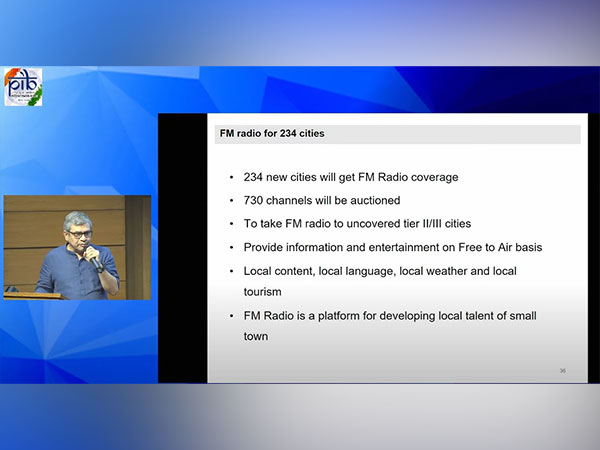Union Cabinet Greenlights 3rd Batch of FM Radio E-Auctions in 234 New Cities
The Union Cabinet, led by PM Modi, has approved the 3rd batch of e-auctions for 730 FM radio channels across 234 new cities, under the Private FM Radio Phase III Policy, with a reserve price of Rs. 784.87 crore. This move aims to promote local content and create new jobs.

- Country:
- India
The Union Cabinet, under the leadership of Prime Minister Narendra Modi, has given the green signal to a proposal for the 3rd batch of ascending e-auctions for 730 FM radio channels in 234 new cities. This approval falls under the Private FM Radio Phase III Policy, with an estimated reserve price of Rs. 784.87 crore. As per the statement released by the Cabinet, it also sanctioned a proposal to set the Annual License Fee (ALF) for FM channels at 4 per cent of Gross Revenue, excluding Goods and Services Tax (GST).
The expansion to 234 new locations aims to address the ongoing demand for FM radio services in areas still not covered by private broadcasters. This initiative is set to provide access to new and regional content, create employment opportunities, and support the 'vocal for local' initiative by promoting local dialects and cultures.
Many approved cities are in Aspirational districts and Left-Wing Extremism (LWE) affected areas. The inclusion of Private FM Radio in these regions is expected to bolster government outreach efforts. The evolution of India's Private FM Radio Policy, which marked its beginning in July 1999 with the FM Phase-I Policy, reflects a transition from Medium Wave (MW) broadcasting to Frequency Modulated (FM) waves. This shift was driven by the need to enhance radio programming quality and modernize outdated equipment.
The FM Phase-I Policy aimed to rejuvenate the radio industry but saw limited success, with only 21 operational channels across 12 cities. To address these shortcomings, the government launched the FM Phase-II Policy in July 2005, following suggestions from the Dr. Amit Mitra Committee and the Telecom Regulatory Authority of India (TRAI). This phase fostered significant growth in the FM radio industry, creating new jobs and extending the reach of private FM radio.
Despite progress, several cities, especially those with populations below three lakh and border areas, remained outside the private FM radio network. The FM Phase-III Policy was introduced to address this gap and recognized the strategic importance of extending FM radio services to border regions like Jammu & Kashmir, the North Eastern states, and island territories.
This policy also acknowledged the existence of 97 vacant channels from Phase-II that had not been auctioned and emphasized the need for optimal use of the FM broadcasting frequency spectrum.
(With inputs from agencies.)










